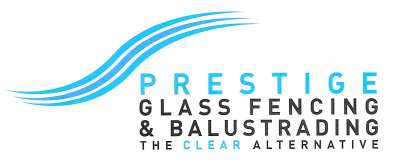A pool owner’s statutory obligations
Pool fencing laws require the pool owner to construct and maintain a fence around their swimming pool (regardless of when the pool was installed). In limited circumstances, owners have in the past been able to apply to local governments for an exemption.
In the case of an in-ground pool, the pool owner is generally the owner of the land. However, if a person renting a property buys a portable pool that requires pool fencing around it, the owner of the portable pool is the pool owner and that person must ensure the pool has a fence around it.
If a substantial portion of a pool fence is demolished or removed, it must be replaced with a new fence. The new fence must comply with the current pool fencing standards and not the standard that applied at the time the original fence was built.
If a substantial portion of a pool fence is in such a state of disrepair that it cannot be practicably repaired, it must be replaced with a new fence. The new fence must comply with current pool fencing standards. If only a small part of the existing fence has fallen into a state of disrepair, then it may be repaired to the same standard that applies to the existing fence.
If a pool owner is unsure as to whether their pool fence complies, they should contact their local government. Significant penalties of up to $12,375, and on-the-spot fines of up to $525, can be imposed in cases of non-complying pool fences.
Above ground pools
The required effective height of the walls of an above ground swimming pool lawfully constructed after 1 February 1991 is 1,200mm. The walls of the pool had to be constructed so they provided a barrier not less than the standard for a pool fence. Fixed or removable ladders were not permitted unless contained within a complying pool fence.
Safety Barriers For Domestic Swimming Pools and Spas
Safety of Young Children
Drowning is the biggest single cause of accidental death among children under five years of age. It causes three out of four fatalities in Australia in this age group, and these occur mainly in private swimming pools.
In 1992 the State Government established compulsory standards for pool security which requires Councils to inspect all private swimming pools when they are installed.
General Principles of Pool Security
Safety barriers are required to restrict children from unsupervised access to a pool from both off the
property and from inside buildings on the property. Barriers may be made of complying fences and gates, or of modified windows that would allow access to a pool.
A property owner and/or occupier is responsible for installing and maintaining the security of a private swimming pool enclosure.
Pool Fences
Pools must be fully surrounded by complying barriers. Boundary fences may be used provided young children cannot climb them and they comply with pool security standards.
Access to a pool area through a garage requires special attention. If a garage has a rear roller or hinged door, a complying fence must be installed between the rear of the garage and the pool.
Access to a Pool from inside a Building Legislation requires that for new pool installations, a barrier must be located between a pool and a house or other buildings. This barrier is usually in the form of a fence isolating the pool from buildings, but may consist of exterior house walls with modified windows that access the pool area. Windows that access a pool must be fitted with barrier-type screens that will provide a similar level of safety to an isolation fence or may be made so that they will open no more than 100mm. The device restricting the window opening to 100mm must require a tool to remove it. Doors accessing a pool area are not acceptable without a separating fence.
Isolation Fences and Gates
Gates accessing the part of the yard containing a pool must conform to the following
- be at least 1.2 metres high
- must not swing towards the pool
- must have a closer that will make the gate shut from any position
- must have a latch that self-engages when the spring closes the gate
- must have the latch release at least 1.5 metres above the outside ground surface.
- must not have rails or braces that would enable a child to climb towards the latch release.
An isolation fence must also comply with pool security specifications as follows:
- minimum height of 1.2 metres
- maximum spaces between vertical members of 100mm
- maximum space under a fence of 100mm
- both fences and gates must not have any rails or other non-vertical parts closer together than 900mm
Special Note Regarding Pools Installed Before 1993
Prior to 1992/93 a barrier was not required between a residence and a pool – there was no required restriction on access to the pool from a residence. Legislation has been introduced to change this, and is as follows
- residents who live in a property with such a pool installation must have barriers installed between the pool and residence by 17 December 2006.
- if a property is sold or changes ownership before that date, modifications must be
“Whilst we endeavour to keep up-to-date with current regulations, we are not certifiers and offer the following information as a guide only. For clarity, of difficult sites, your local council Pool Certifier will be able to assist you further.”

